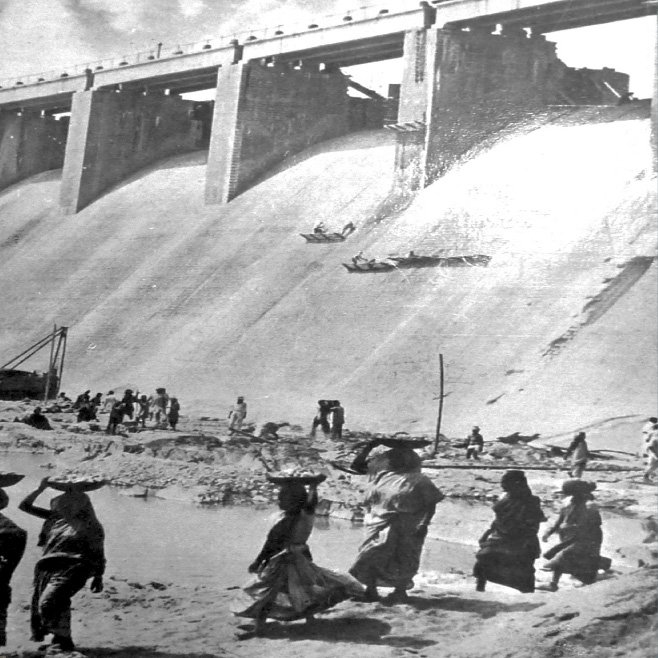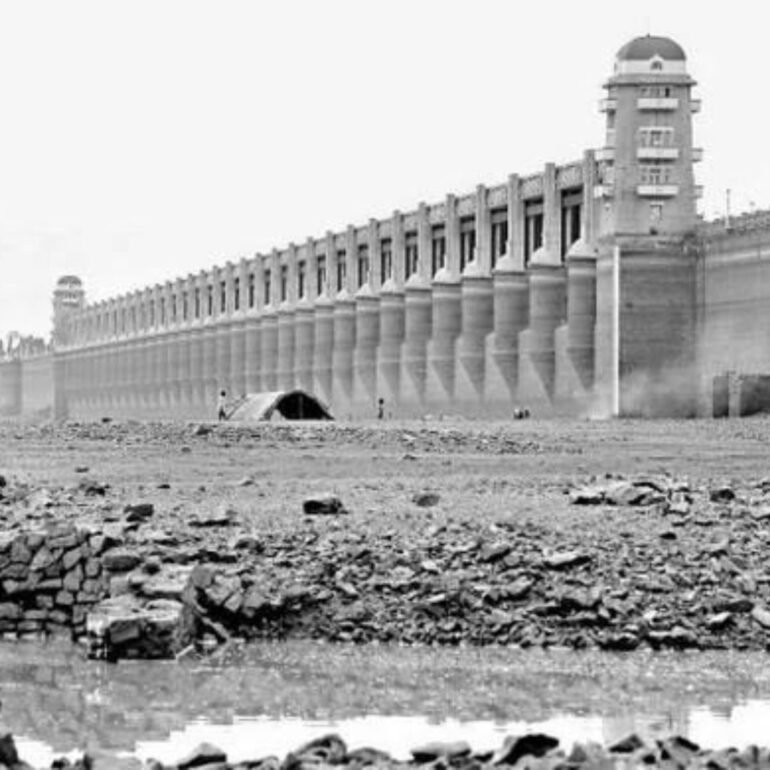In the years leading up to India’s independence, as the country prepared to shake off colonial rule, a lesser-known but equally transformative battle was unfolding, one that would shape the very soil, water, and energy of South India. The Tungabhadra Dam was more than just a water reservoir; it was a masterstroke of post-colonial planning, aimed at combating food shortages, powering rural industries, and stabilizing an unpredictable river. What few realize is that this project wasn’t just about irrigation—it was a bold step toward modernizing an entire region’s economy.
The story behind its creation isn’t just about bricks and mortar—it’s a tale of how a nation’s desire for self-sufficiency, innovation, and prosperity was channeled into one of the most iconic water management projects in South India.
The Tungabhadra Dam, a monumental engineering achievement, has stood as a lifeline for the people of Karnataka and Andhra Pradesh since its completion in 1953. Situated near Hospet in the Vijayanagara district of Karnataka, this multi-purpose dam harnesses the waters of the Tungabhadra River, a tributary of the Krishna River, to fulfill a wide array of needs including irrigation, electricity generation, and water supply.
The story behind its construction is one of vision, ambition, and resilience. It reflects the spirit of post-independence India, determined to harness its natural resources for the welfare of its people.
Visionary Beginnings

The concept of the Tungabhadra Dam dates back to the British colonial era, when engineers and administrators recognized the need to control the turbulent flow of the Tungabhadra River. However, it wasn’t until the 1940s, during the tail end of British rule and into the early years of independent India, that the project truly took off.
At the heart of the project’s inception was the idea of using the dam to irrigate vast expanses of farmland and to generate hydropower, which was critical to the economic development of the region. The construction of the dam was envisioned as a major step in addressing water shortages, improving agricultural output, and providing energy for rural development.
The Engineering Challenge

Building a dam of this magnitude required both ingenuity and perseverance. The region’s hilly terrain, unpredictable river flow, and extreme weather conditions made construction an enormous challenge. Engineers had to devise innovative techniques to deal with the immense pressure of water while ensuring the structural integrity of the dam.
The construction of the dam involved creating a 49.5-meter high and 2.4-kilometer long masonry structure, capable of storing 3,760 million cubic meters of water. This made the dam one of the largest in India at the time. Thousands of laborers and engineers worked day and night to build the dam, enduring harsh weather and difficult working conditions.
The foundation stone for the project was laid in 1945, and construction continued through the turbulent years of India’s partition and independence. It became a symbol of hope for a newly independent nation that was looking to infrastructure projects as a means of nation-building.
Challenges During Construction
One of the major challenges faced during the construction was the management of the river’s erratic flow. The Tungabhadra River has a history of both extreme floods and droughts, which made it difficult to predict the river’s behavior. Engineers had to constantly adapt to these changes, reinforcing the dam’s structure and adjusting their methods to handle the river’s powerful flow.
Another challenge was sourcing the materials and manpower needed to build such a massive structure. The region around Hospet, though rich in resources, lacked the industrial base to easily supply the materials necessary for construction. Cement, steel, and other critical materials had to be transported from far-off locations, further complicating the project.
In addition to material challenges, the sheer scale of labor required was daunting. Thousands of workers, many of whom were unskilled laborers, had to be trained and organized. Despite these difficulties, the dedication of the workforce and the leadership of engineers ensured that the dam was completed in just eight years.
Completion and Impact
The Tungabhadra Dam was completed and inaugurated in 1953, marking the beginning of a new era for the region. Upon completion, the dam was capable of irrigating over 1.2 million acres of land in both Karnataka and Andhra Pradesh. The hydroelectric power generated by the dam also provided electricity to several towns and villages, spurring economic growth and development.
The dam’s reservoir, known as Tungabhadra Reservoir, became an essential water source for agriculture, especially during dry seasons. The project significantly boosted the local economy by ensuring year-round irrigation for crops like paddy, sugarcane, and cotton, which were previously at the mercy of the monsoons.
Legacy of the Tungabhadra Dam
Today, the Tungabhadra Dam is more than just a feat of engineering; it is a symbol of how infrastructure can transform the lives of millions. The dam has played a crucial role in reducing the vulnerability of farmers to droughts and floods, while also providing electricity to remote areas.
In addition to its practical purposes, the dam has become a tourist attraction, drawing visitors to marvel at its grandeur and the scenic beauty of the surrounding area. It is also an important part of the region’s ecosystem, with the reservoir providing a habitat for various species of birds and fish.
The Tungabhadra Dam stands as a testament to human ingenuity and the power of vision. Its construction may have been fraught with challenges, but it has provided lasting benefits to the people of Karnataka and Andhra Pradesh for decades, making it one of India’s most iconic infrastructural achievements.
The story behind the Tungabhadra Dam’s construction is one of determination, resilience, and the drive to overcome adversity for the greater good. It is a reminder of the transformative power of well-executed infrastructure projects and the lasting impact they can have on a region’s prosperity and development. As the dam continues to serve its purpose, it remains a symbol of progress and hope for generations to come.


